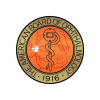Below is a transcript of oral examination sample video #3 with the examiner’s questions and candidate’s correct responses mapped to each area of the performance criteria.
Case #3
Examiner: Our next patient is a 58-year-old man seen for blurred vision in the right eye. Describe what you see in the photo.
Elicit relevant historical information from the patient.
Candidate: I would like to ask this patient about the time course of onset and progression as well as any previous history of trauma, surgery. Any history of cancer, any weight loss, or any other history of smoking or other problems which might put him at risk.
Identify important findings in the clinical examination and order appropriate testing.
Examiner: What else would you be looking for on your eye exam?
Candidate: Do a comprehensive eye exam specifically look in this eye for any other possible peripheral lesions and also in the other eye as well. Look to see if any other possible lesions are present like the multifocal disease.
Generate a differential diagnosis based on information collected in the history, ocular examination, and ancillary testing.
Examiner: What would be in your differential diagnosis?
Candidate: Differential diagnosis of the choroidal lesion includes choroidal melanoma, metastatic choroidal disease, as well as suprachoroidal hemorrhage and choroidal effusions following any kind of surgery or trauma.
Identify the most likely diagnosis.
Examiner: Are there any other investigations you would perform for this patient?
Candidate: Yes, at clinic I would like to get an A scan and B scan to differentiate between the lesions which I have mentioned.
The examiner shows these test results to the candidate:


Upon requesting, reviewing, and interpreting the A and B scans, the candidate concludes:
Candidate: So, based on these findings my top differential is choroidal melanoma.
Provide a safe and effective plan for medical and/or surgical management of patients with the conditions depicted or described, including possible alternatives and/or the proper referral of the patient.
Examiner: And with your leading diagnosis, how would you manage the patient?
Candidate: For medium sized choroidal melanoma, the top treatment choice is going to be plaque brachytherapy.
Recognize potential complications of proposed treatments including surgery and make accurate inferences regarding the expected outcomes and prognosis.
Candidate: In COMS trial, it was shown that enucleation versus this treatment is not going to change the survival, and this is a method that preserves the eye.
Be able to communicate the management plan in a clear and ethical manner, which may include explaining how information is communicated to the patient or family.
Examiner: How would you discuss the prognosis with the patient?
Candidate: As I mentioned, if I have the genetic profile based on the FNA, it is going to be very helpful because some fall into low-risk categories, some are in high-risk categories, but lifelong they need to be followed and repeatedly they need to have these imagings and liver function test, chest x-rays to look for metastasis but obviously the prognosis is better than systemic melanoma.
Need more help with this?
Don’t hesitate to contact us here.




